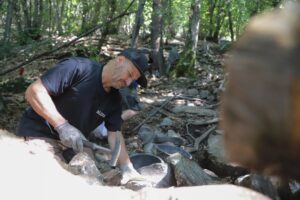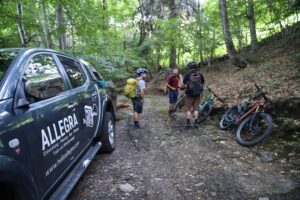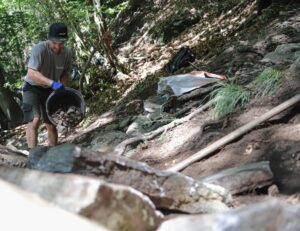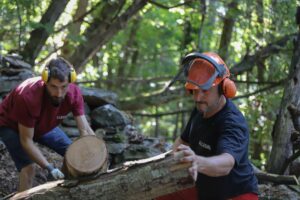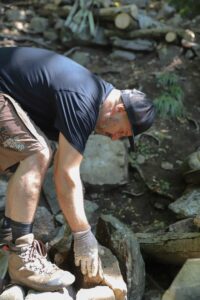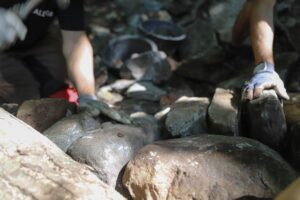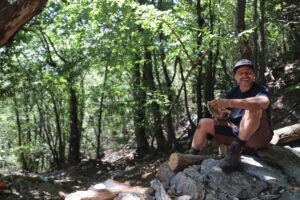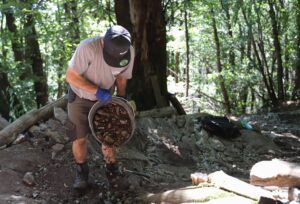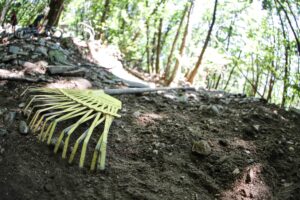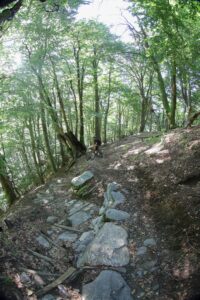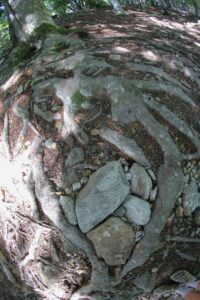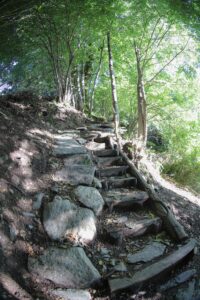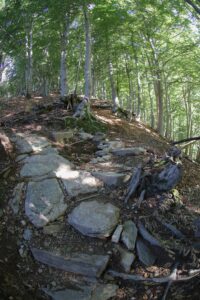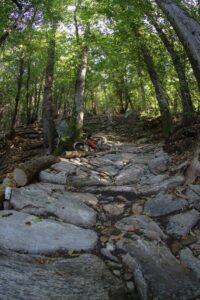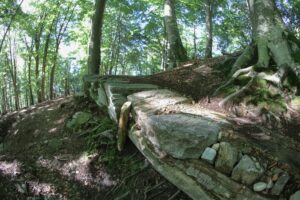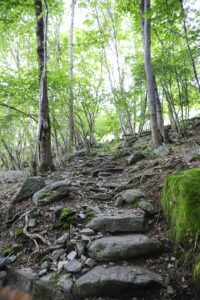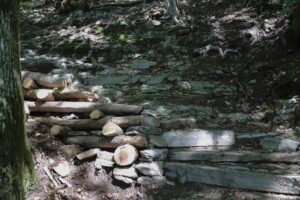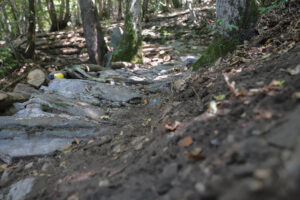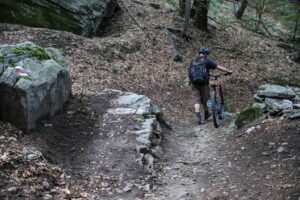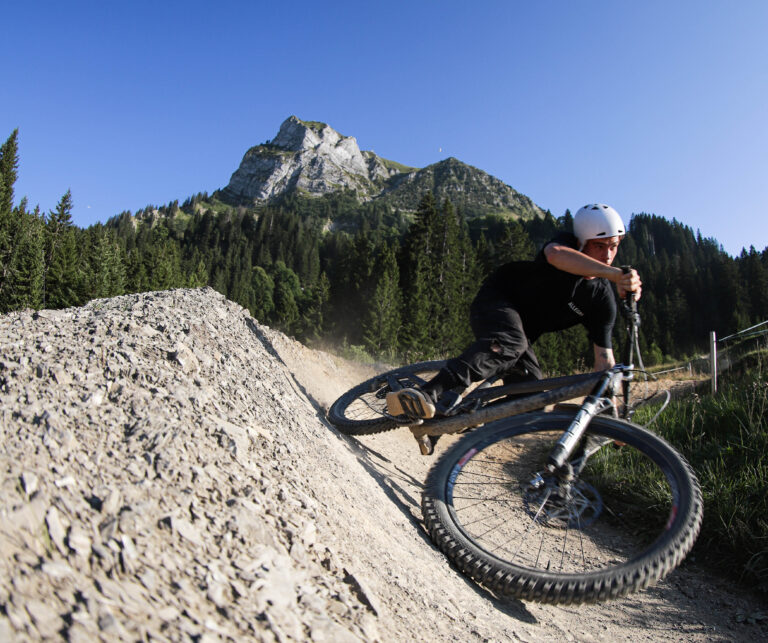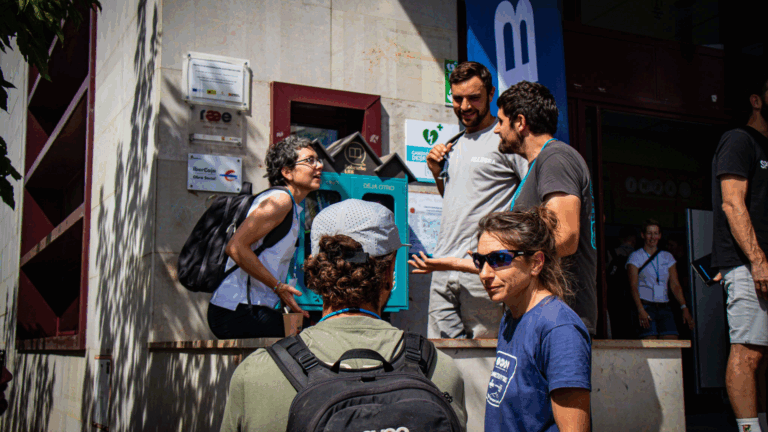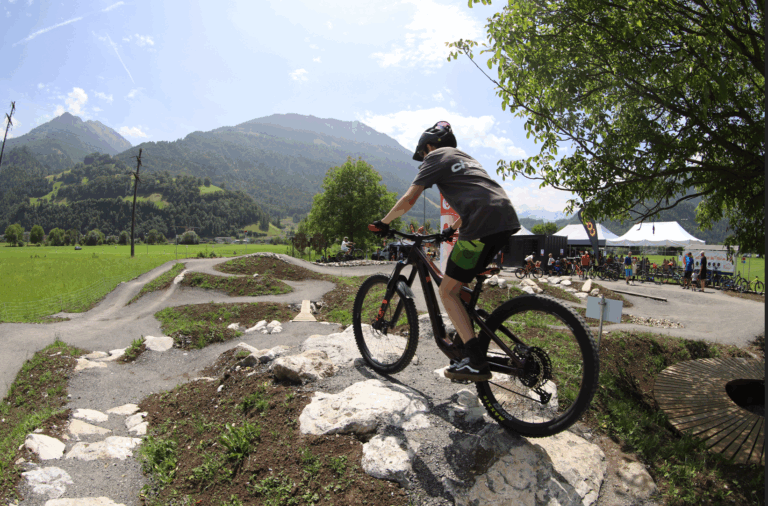FACTS
| Project | Planning and construction of the red shared trail “Monti Motti” |
| Client | Ascona Locarno |
| Location | Locarno, Switzerland |
| Period | June – August 2025 |
| Project management | Lukas Häusler |
| ALLEGRA Trail Crew | Gerry Cusini, Bruno Tobler, Pablo Nieva |
Project description – Trail building Monti Motti
From a former hiking trail, the three-person construction team from ALLEGRA Switzerland has built a unique shared trail for hikers and mountain bikers, combining red riding level with some black elements.
The project aims to make the historical trail accessible, safe, and sustainable for both target groups, without compromising the unique character of the Locarno area. What was previously partially impassable will be transformed, step by step through teamwork, into a technically challenging yet sustainable experience for everyone at Lake Maggiore.

Character and construction
- Technical singletrack: intuitive line guidance – rollable on a mountain bike and comfortable to walk on in hiking boots.
- Adjustments: formerly unrideable steps and ledges are made less steep, curve radii are increased, and stones and path layout are strategically repositioned to allow for more flow and rideability.
- Exposed roots are protected by stones, steps are reduced, and water runoff is directed.
- Curves & Berms: no more tight switchbacks needed; curves are designed to be rideable and are partially reinforced with stone or wooden elements. To achieve this, the trail is sometimes offset to increase the radius.
and to make the curve rollable. - S-shaped staircases with variations for cyclists and hikers: built flat to make both walking and rolling comfortable. Some also feature wooden railings to enhance the experience.
to make it even safer - By strategically placing dead tree trunks, shortcuts are avoided and users are guided in a targeted manner.
Sustainability & Material Use
- Local materials: Chestnut wood, stones, and soil sourced directly from the surrounding area are used. Chestnut wood is particularly durable due to its high tannin content.
- No fresh wood: only dead wood is used – stable, dimensionally stable and environmentally friendly.
- Water management: Drainage systems, stone placements and targeted earthworks prevent erosion and ensure the longevity of the trail.
- Environmental compatibility: Branches and roots are only removed where absolutely necessary. In some cases, tree stumps or stones are relocated and reintegrated elsewhere.
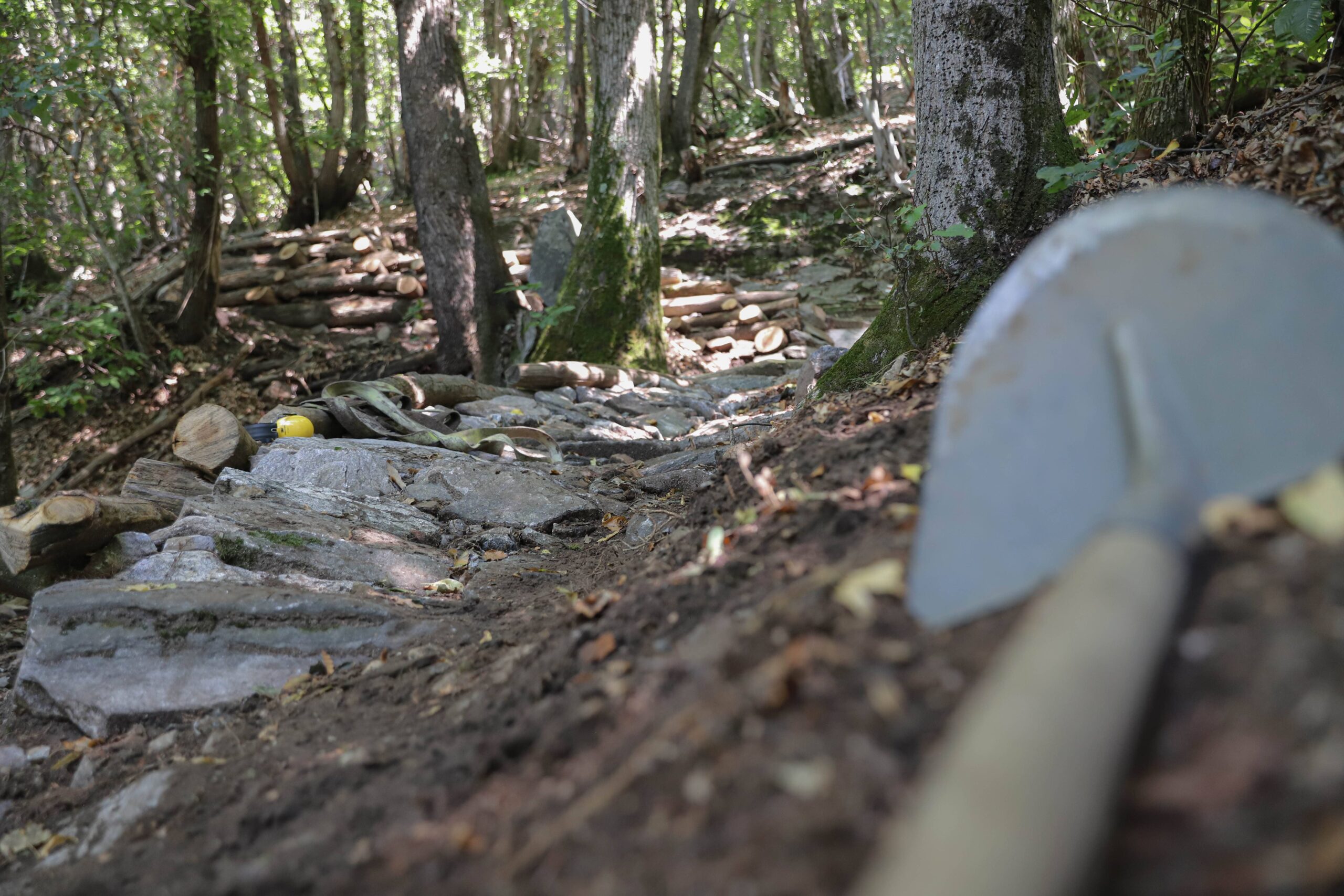
Experience & Special Features
- Starting point: below the village of Monti Motti, accessible via a 12 km paved road or, for a more athletic approach, by climbing uphill on the trail itself.
- A particular highlight: crossing through an abandoned settlement, Monti di Metri, with historic stone roofs and views of the lake – formerly a center for chestnut collectors.
- The trail is playful and varied with jumping elements, different lines and optional, intuitive variations for all user groups, and occasionally reveals a view of the lake.
A place that uniquely combines history, nature, and trail building.
The trail follows a highly technical line, deliberately designed to be intuitive – bikers and hikers alike will naturally find their way. Many sections that were previously unrideable have been modified: steps and larger drops have been smoothed, corner radii widened, and rocks strategically repositioned to make the trail smoother and safer. Whereas many switchbacks were previously necessary, the new banked turns can now be ridden completely. Stairs have been built in an S-shape to make both walking and riding them comfortable. The local trail crew places particular emphasis on the sustainable use of materials. We primarily use local chestnut wood, which is especially durable due to its high tannin content, as well as many stones and soil from the surrounding area. Dead wood is intentionally used because it is already dimensionally stable. The trail crew only removes roots, branches, and other natural obstacles where absolutely necessary. In many cases, tree stumps or stones are reused elsewhere, allowing the trail to retain its character and maintain a very natural feel.
A key element of the project is water management: drainage systems, targeted earthworks and stone placement prevent erosion, ensure the longevity of the trail and guarantee that water flows away reliably.
Incidentally, long-term maintenance of the Monti Motti Trail is also planned by the staff of Locarno: Leaves and other natural deposits are removed about three times a year.
The trail offers a unique experience. It begins below the village of Monti Motti and can be reached via a twelve-kilometer paved road or, alternatively, directly via the trail itself for experienced riders. After the first section, you arrive at a small, abandoned settlement, Monti di Metri, which was once used for chestnut harvesting. Here, an impressive view of the lake and the historic houses with their characteristic stone roofs unfolds. The combination of technical sections, playful features, and scenic highlights makes the trail a diverse experience for all riders. A place that uniquely blends history, nature, and trail building.
The trail construction is a gradual, dynamic process. Every day brings new challenges for the A-Team – whether it's moving stones or raising the trail's elevation on particularly steep sections. Some bends take two to three days, while other sections can be optimized with small drainage systems or root stabilization. What matters here is teamwork, creativity, expertise, and open communication. The result is impressive: Monti Motti is a unique shared trail that combines technical challenges, playful elements, and stunning scenery.

After around 60 days of construction in the summer of 2025, our A-team around Gerry, Bruno and Pablo more than fulfilled the mission: The «Monti Motti» offers both mountain bikers and hikers the opportunity to experience the trail instead of just passing through it, and to discover the landscape of Locarno in all its facets.
Incidentally, a roughly 900-meter-long trail is also being built along the Cardada River in Locarno. It's very playful, with many options, and a real scenic highlight. More details to follow soon.

